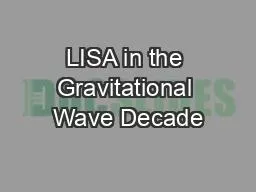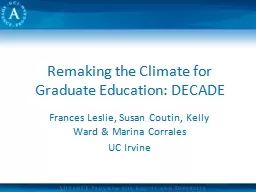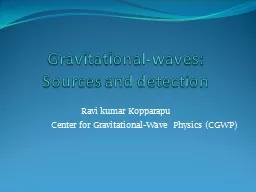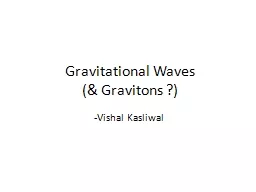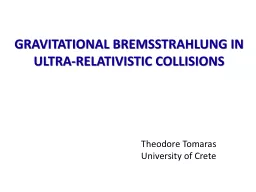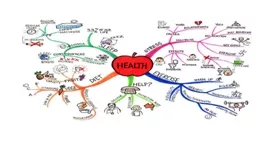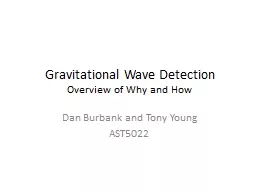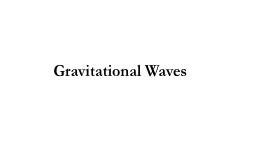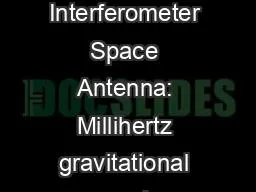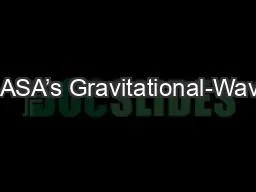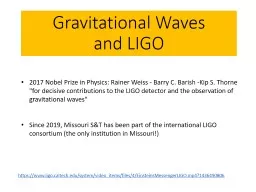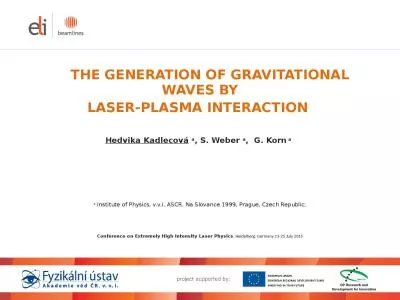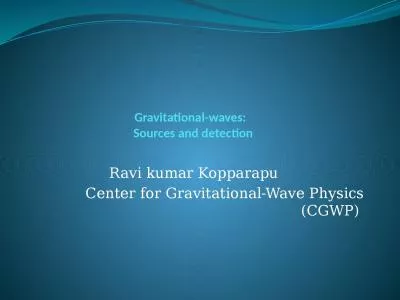PPT-LISA in the Gravitational Wave Decade
Author : basidell | Published Date : 2020-06-25
John W Conklin for the GWSIG University of Florida jwconklinufledu Gravitational Wave Decade LISA ranked 2 nd after WFIRST in NWNH 2030 BICEP 2 2014 aLIGO VIRG0
Presentation Embed Code
Download Presentation
Download Presentation The PPT/PDF document "LISA in the Gravitational Wave Decade" is the property of its rightful owner. Permission is granted to download and print the materials on this website for personal, non-commercial use only, and to display it on your personal computer provided you do not modify the materials and that you retain all copyright notices contained in the materials. By downloading content from our website, you accept the terms of this agreement.
LISA in the Gravitational Wave Decade: Transcript
Download Rules Of Document
"LISA in the Gravitational Wave Decade"The content belongs to its owner. You may download and print it for personal use, without modification, and keep all copyright notices. By downloading, you agree to these terms.
Related Documents

